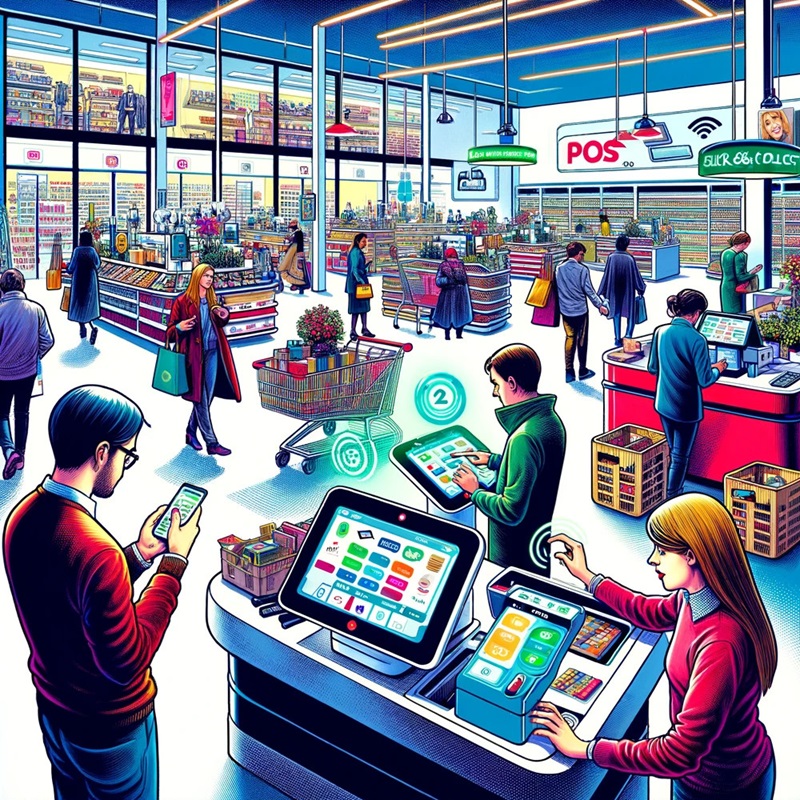
Omnichannel Retail POS
In today’s retail landscape, the line between online and offline shopping is increasingly blurred. Consumers expect a seamless experience, whether they’re browsing a website from their couch, checking product details on their phone, or visiting a store in person. This shift in consumer behavior has propelled the rise of omnichannel retail POS systems, which are revolutionizing the way we shop.
The evolution of retail POS systems from traditional to omnichannel has been driven by the need to unify the customer journey. Traditional POS systems, while effective in managing in-store transactions, often fall short in integrating with online and mobile sales channels. Omnichannel retail POS systems address this gap by providing a unified platform that connects all sales channels, offering a cohesive and consistent shopping experience.
Integrating online and offline channels is a cornerstone of omnichannel retail POS. Take, for example, the click-and-collect service. Customers can browse and purchase products online, then choose to pick them up at a nearby store. This not only offers convenience but also drives foot traffic to physical stores, potentially leading to additional in-store purchases. Similarly, if a product is out of stock in-store, a salesperson can use the POS system to locate the item at another store or online, ensuring the sale is not lost.
Customer engagement is significantly enhanced with omnichannel retail POS. By leveraging data collected from various touchpoints, retailers can create highly personalized shopping experiences. For instance, a customer who frequently purchases athletic wear online might receive targeted promotions for new arrivals in that category when they visit a store. This level of personalization fosters customer loyalty and encourages repeat business.
However, implementing an omnichannel retail POS system is not without its challenges. One major obstacle is the integration of legacy systems with new technology. Many retailers still rely on outdated POS systems that are incompatible with modern software. Overcoming this hurdle often requires a significant investment in both time and resources. Additionally, ensuring data accuracy and consistency across all channels can be complex, necessitating robust data management practices.
Despite these challenges, the benefits of an omnichannel retail POS system are clear. Retailers who have successfully implemented these systems report higher customer satisfaction, increased sales, and improved operational efficiency. For example, a large electronics retailer that adopted an omnichannel POS system saw a 30% increase in online-to-offline sales within the first year. The ability to offer services like in-store returns for online purchases and real-time inventory updates proved invaluable in enhancing the customer experience.
Looking ahead, the future of omnichannel retail POS is bright. As technology advances, we can expect even more innovative features that further blur the line between online and offline shopping. Virtual reality (VR) and augmented reality (AR) are poised to play a significant role in this evolution, offering immersive shopping experiences that integrate seamlessly with omnichannel POS systems. Imagine being able to virtually try on clothes from the comfort of your home and then purchasing them through a unified POS platform.
Omnichannel retail POS systems are transforming the shopping experience by integrating online and offline channels, enhancing customer engagement, and driving sales growth. While the journey to implementation may be challenging, the rewards are well worth the effort. Retailers who embrace this technology are well-positioned to meet the demands of today’s consumers and thrive in the competitive retail landscape.
Download our Vendor Selection White Paper
This white paper aims to guide businesses through the process of selecting a payment terminal vendor by examining essential considerations such as security features, integration capabilities, user experience, and cost implications.

